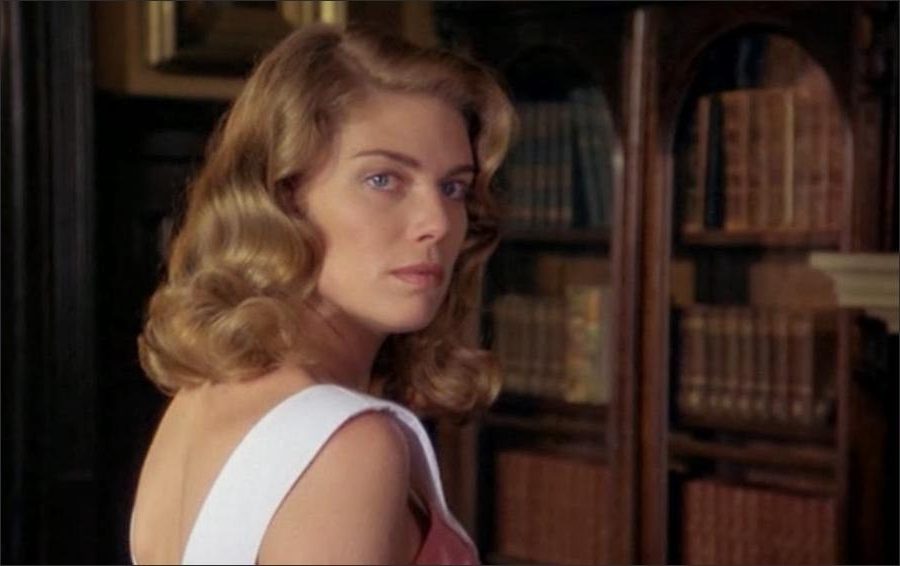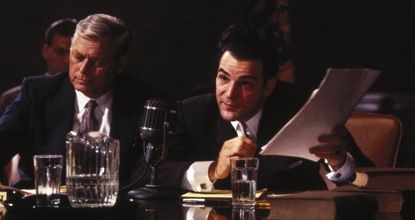Corrupt federal agencies, government show trials, and political persecution are just democracy in progress according to the House on Un-American Activities Committee. 1988's The House on Carroll Street explores the impact of government overreach, the consequences of leaving federal agencies unchecked, and the need for dissenting voices all while relating one of the best thrillers that Hitchcock never made. At once an indictment of one of the darkest chapters in American history and a classic suspense story, the film raises provocative questions that continue to resonate today. For a thriller that is guaranteed to get your pulse and mind racing pay a visit to The House on Carroll Street.
The story begins in 1951 as Life magazine photo editor Emily Crane is forced to testify during a House on Un-American Activities Committee hearing. When she refuses to cooperate with the committee and name friends and colleagues she is fired and later finds employment as a companion to an elderly woman. Soon after starting her new job she notices strange things happening at the house next door. She tries to begin a friendship with a young refugee living in the house, but their brief acquaintance is brutally ended when he is murdered. Blaming herself for his death, she sets out to solve his murder and see that his killer is brought to justice. In her ensuing investigation she stumbles upon a devastating revelation that puts her at the center of a dangerous conspiracy that extends far beyond the confines of The House on Carroll Street.
The House on Carroll Street is in many ways more pertinent viewing now than at the time of its release over thirty years ago. Inspired by two of the darkest chapters in America's history the film offers vital lessons for our own politically fraught era. The story begins with Emily testifying in one the infamous House on Un-American Activities 'red scare' hearings and highlights the ways in which political overreach and forced consensus allowed the government to discredit, prosecute, and effectively blacklist citizens who held dissenting beliefs. Similarly, her ongoing harrassment at the hands of federal agents reveals the ways in which citizens were stripped of their rights and dignity. These elements of the film offer valid insight into the hysteria of the McCarthy era and bear an uncanny resemblance to the blacklisting efforts of 'cancel culture' and the increasing persecution of political opponents and dissenting voices in modern America. The film also draws ample inspiration from Operation Paperclip, the real-life CIA operation in which US intelligence relocated Nazi scientists and war criminals in an effort to combat the rising threat of the Soviet Union. The depiction of nefarious top secret operations and the lengths at which federal agencies go to conceal them serve as an apt warning against the dangers of unchecked government power and contain striking similarities to events dominating today's headlines. Even as it offers a vital political critique the film never resorts to heavy handedness and instead allows the actions of its characters and the ramifications of those actions to speak for themselves. In the midst of its provocative political and ethical questions the film never sacrifices any of its thrills or suspense and offers a twisting plot that would have made even Hitchcock himself proud. For a thriller that will get your heart racing and your mind reeling stop by The House on Carroll Street.
The film transports viewers to 1950's New York thanks to the brilliant work of its cast. Jessica Tandy proves an entertaining curmudgeon as Emily's elderly employer, Miss Venable. Christopher Buchholz personifies torment in his brief appearance as war refugee Stefan. Jeff Daniels conveys decency and charm as morally conflicted FBI agent Cochran. Mandy Patinkin steals each scene in which he appears as callous federal prosecutor Ray Salwen. Kelly McGillis shines in a multi-faceted performance worthy of Old Hollywood's leading ladies as the determined Emily.
The House on Carroll Street is an old school Hollywood thriller that remains eerily relevant today. The film's exploration of a largely hidden part of America's past sheds much needed light on one of the nation's darkest secrets and raises vital questions that we continue to wrestle with today. Through its uniformly engrossing performances the film weaves a twisting plot that is certain to have viewers on the edge of their seats. For a thriller that will keep you guessing until its final review and asking questions long after its final credits fade step inside The House on Carroll Street.




No comments:
Post a Comment